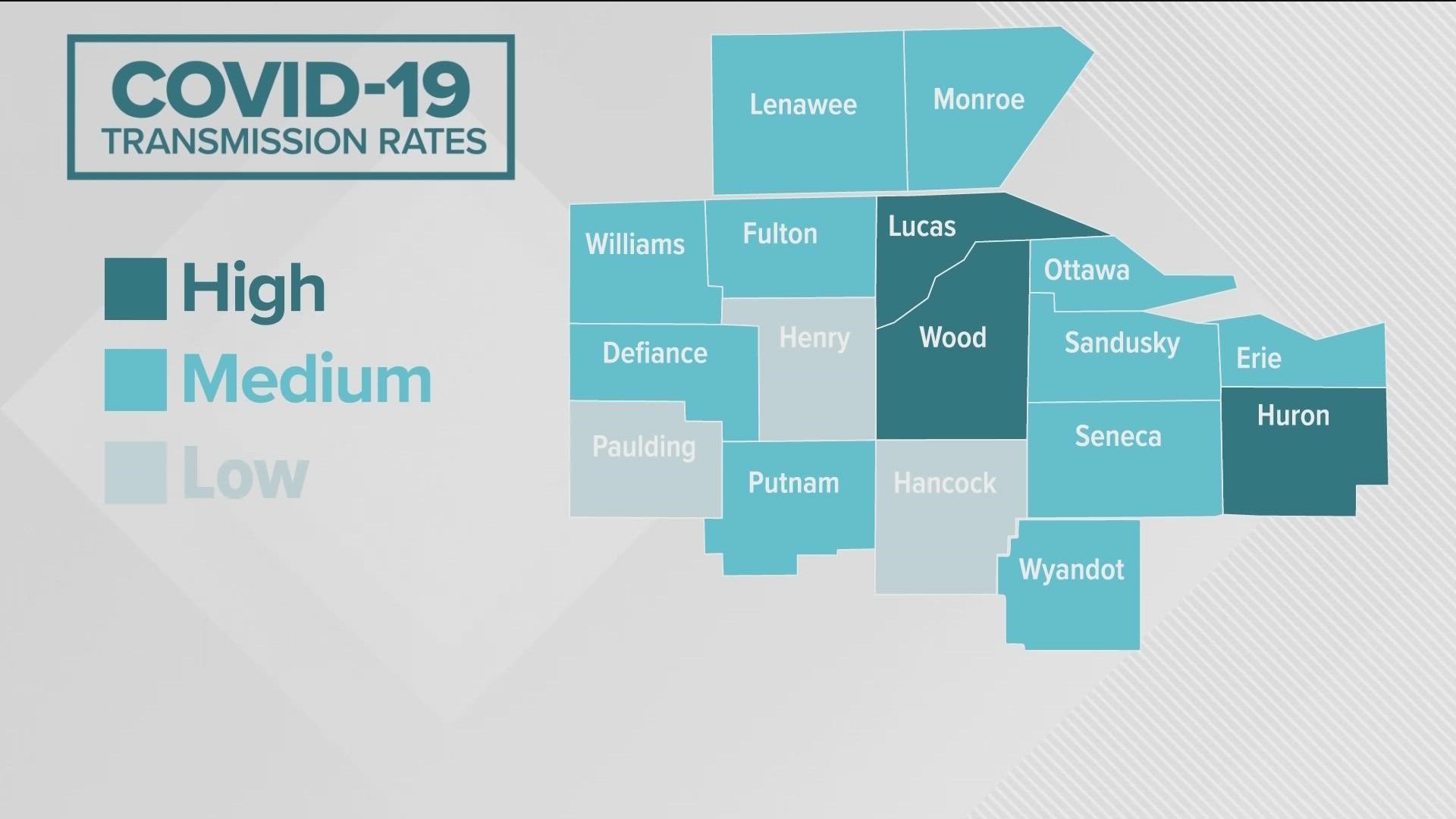TOLEDO, Ohio — After weeks of watching neighboring counties go red on the U.S. Centers for Disease Control and Prevention's COVID-19 transmission map, Lucas County residents saw the same thing happen this week.
But those same counties that were previously experiencing that red designation now have returned to yellow, or even green. In fact, Lucas and Wood counties are the only counties in northwest Ohio to currently be red -- the CDC's designation for counties with a high transmission of the virus.
Throughout the pandemic, we continue to see these little ripples across the state. One week, Williams County will be among the worst areas in the state, and a couple weeks later, it drops to the bottom of the rankings.
The red designation is the highest level of transmission and is important because the CDC recommends that in those areas people should wear masks indoors. Some companies are mandating that employees wear masks. Others may not because it is just a CDC recommendation.
But the interesting thing about Lucas County moving to red this week is that it was actually a week of positive news on the coronavirus front for Ohio. Case numbers have fallen to the lowest level since the beginning of July and the number of hospitalized COVID-19 patients dropped by about 60 this week.
So what happened?
The key number in the CDC's threat designation is case rate per 100,000 over a seven-day period. The other categories are new hospital admissions and percentage of in-patient beds filled by COVID-19 patients. But once a county hits 200 on a case rate, it lowers the threshold needed to trigger the red designation in other categories.
For example, Lucas County's number this week is 207. Because it is more than 200, new hospitalizations must be below 10 per 100,000 to remain in the "yellow" designation. If the case rate was less than 200, new hospitalizations could be twice as much - less than 20. This week, however, Lucas County was over 200 and the new hospitalizations rate was 16.9, so the level was raised to red. Last week, the case rate was 199.6 - probably one case from being at 200 - and hospitalizations were about the same, but since it wasn't over 200, the level was yellow.
While the "red" designation may seem scary, the area and the state are doing much better than last year at this time. Ohio was seeing more than 8,000 new cases per day last year, but tallied fewer than 3,000 per day this week. Locally, there were about 450 COVID-19 patients in northwest Ohio hospitals on this date last year. Today, there are 131.
More encouraging news is that bivalent boosters are now available. This vaccine protects against not only the original version of the virus but also the current subvariants. Previously, people who were vaccinated were still susceptible to infection but protected against serious illness. The current vaccine should protect against serious illness and infection - at least until a new variant comes along. But omicron is so dominant, that it is likely to be the main variant throughout the fall and winter.
More on WTOL:

